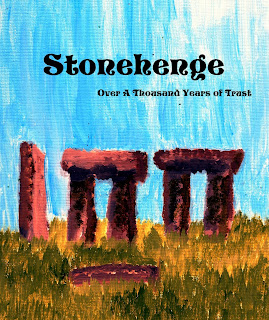Strategy is not only the logical components of
actions that lead to goal achievement. True strategy has significant social
aspects based within the cognitive understanding of workers, stakeholders, and
even customers. A paper by Vallaster and Muehlbacher (2012) outlines the social
representations inherent within strategy formation and its social context of
development.
Strategic success must take into account actions,
interactions, and negotiations of multiple actors. Each person realizes the
strategy through his or her own vantage points and previous practices. Strategy
must fit within others mental framework in order to be successful and fully
implemented throughout an organization.
Strategizing takes includes 1.) narratives, 2.)
actors personal interests, 3.) organizational design, culture and past
practices, and 4.) market factors. Strategic development should take into
account the multiple factors and their potential weight in order to be
successful and navigate the social environment.
Individual context-dependent interpretations influence
the way in which people make decisions. As new information is presented it
changes past schemata to that which is in transition and finally to new
schemata. Thus, each strategy is situation dependent on the understandings of
those involved in its formation and those who are going to carry it out. It naturally changes they way they think about such strategies.
Strategy is also dependent on the internal workings
and actors of an organization. Through the process of strategic development a
company’s practices and cultural perceptions will affect a strategies
fulfillment. In other words, the way in
which people think will influence how they see the strategy and its potential
benefits for themselves. It is this self-interest that eventually produces "buy in".
As most strategies seek to find competitive advantages,
the market and various outside stakeholders will create pressure on the
strategy and influence its perception. As the human mind considers the
effectiveness of potential strategies these external factors, will act in
judgment and will naturally create pressures. Poor strategy that does not
consider the external structure and pressures is likely to fail.
The way in which society views itself and interacts
with itself will influence strategy through social representations. Social
representations are 1.) complex formations of knowledge that comes from social
discourse, and 2.) socio-cognitive processes that come from that discourse. As
something new enters into society’s awareness there is a communication process
that comes to define it. In other words, society settles on meaning.
Strategies consist of core and peripheral elements.
Core strategies are seen as logical and have shared cognitions based within the
common perspectives of the participants (i.e. customer oriented service as a
strategy). According to the authors, the
actor must believe in their realities and put those forward to others but
should be willing to bend these understandings to create shared realities among
a group of people. This produces higher levels of agreement.
Each person within the strategy will have to make
personal meaning from it. Therefore, each participant has sub-strategies related
to their place within the strategy based within their memories and
understandings (Barsalou, 1999). They use their past experiences to find
meaning within the strategy and build personal sub-strategies from it.
The peripheral aspects of the strategies include
those who are not directly related to the strategy formation but may be
impacted by it. For example, customers who have needs of quality and experience
should have their information considered as this improves upon the strategies
effectiveness. Without understanding the impact on the environment or others,
it is doubtful such strategies will be fully effective. Ineffective strategies can lead to lower profits and lost marketplace.
The authors bring forward the concept that the context
strategy formation is as much social as it is logical. Logic is the center but
its social aspects are the periphery. All strategic decisions must take into
account the impact and perceptions of others. When stakeholders cannot make
meaning or formulate a social connection to the strategy, it is unlikely to be fruitful. Without some type of personal cognitive agreement people will reject the strategy and the company's offerings.
The authors dance around the concept of social
projection. Projection is a concept brought forward by Freud to describe how
one unconsciously projects their traits onto another. Social projection in strategy
is the idea that strategy is built from the inner and outer understandings of
the maker(s) and can be projected forth into and from a group. For example, a company
that is losing their financial and competitive position may rally their
executives to formulate a strategy. Once that strategy has been created, it can
be projected onto others within the organization in the attempt to foster
action that fulfills the strategy. Social projection can lead to social
behavior based upon varying factors inherent in the environment that lead to agreement or rejection.
Two Related Concepts:
Path-Goal
Organizational Alignment
Barsalou, L. W. (1999):
Perceptional Symbol Systems. Behavioral and Brain Science, 22 (1999).
Vallaster, C. and Muehlbacher, H. (2012). Strategy
formation as social representation: understanding the influence of contexts on
strategy formation. Betriebswirtschaft/Business
Administration Review, 72
(5).

